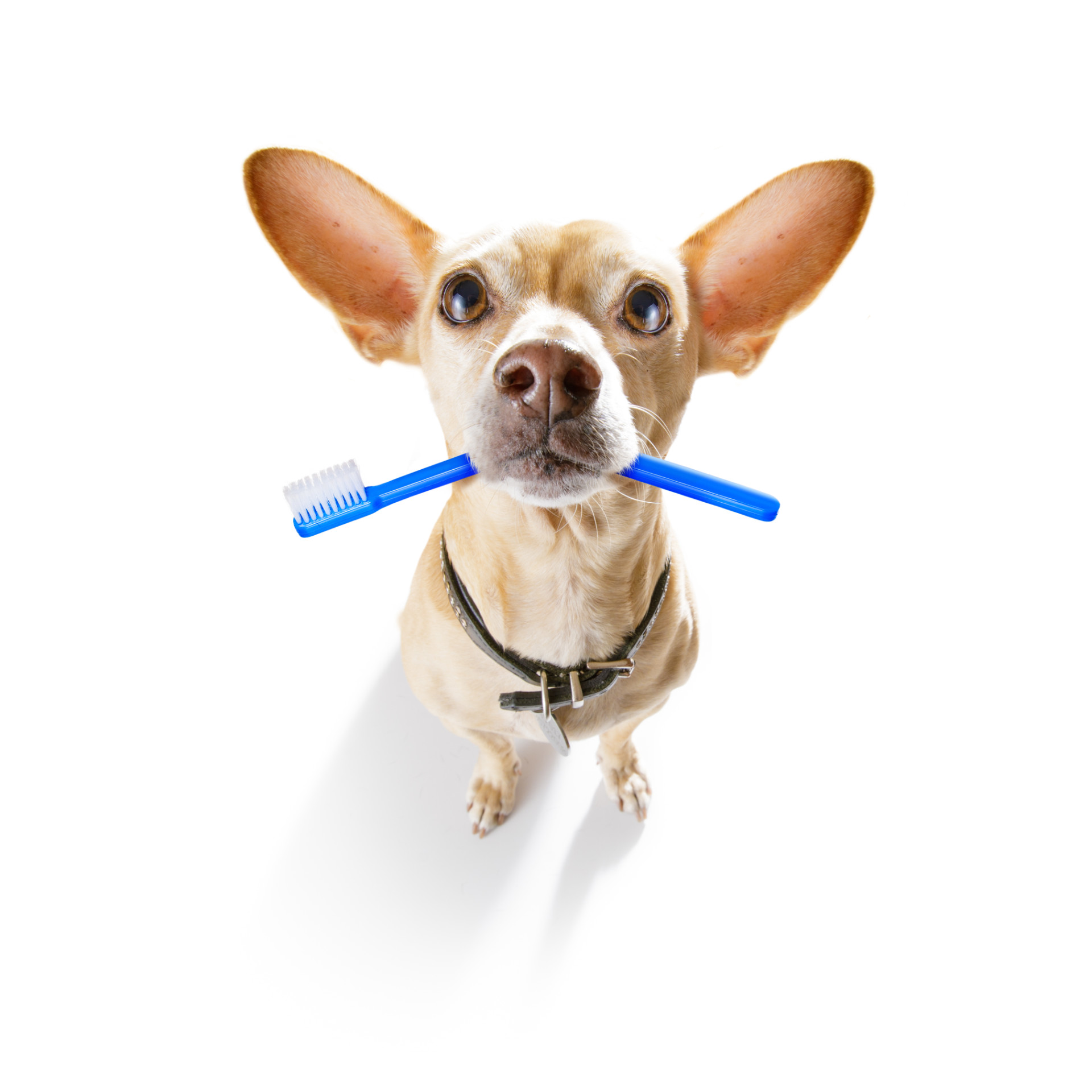Furthermore, we are bombarded with suggestions for “revolutionary” Proxi-brushes, PerioAid toothpick holders, expensive fluoride toothpaste, and specialized mouthwashes. Nevertheless, as irritating as these incessant recommendations can be, they are important. We ignore daily maintenance at our own peril.
Simply put, there is a war going on in our mouths. Similarly, the war wages in our pets’ mouths. Teeth and gums are under attack 24 hours a day, every day, as bacteria attempt to colonize our teeth and form the complex biofilm known as plaque. If plaque gains the advantage, it can lead to periodontal disease, starting, but not limited to, gingivitis or swelling and irritation of the gums. If the progress of periodontal inflammation is not halted, the supporting structures of the teeth, including the surrounding bone, are damaged and, ultimately, destroyed. Teeth can eventually loosen and are lost, or require extraction. Furthermore, it is now understood that untreated periodontal disease can have effects on general health; for example, it is associated with increased risk for heart disease and diabetes.It is important to note that our pets will never receive the same level of attention we provide to our own teeth: It is simply impossible to brush our pet’s teeth with the same thoroughness. Additionally, most pets are lucky if they receive a dental cleaning even once a year: Cleanings are expensive and require general anesthesia.
In absence of regular maintenance, plaque gradually builds over time, forming layer upon layer. Eventually, saliva mineralizes these films, forming calculus (tartar), the hard, dark encrustation indicative of more advanced periodontal disease.Understanding these processes, why is it such a surprise when we suggest you dedicate some time every day attending to your pet’s oral health? Their anatomy is essentially the same as ours. The disease process is identical. Dogs (and cats, too) react to plaque similarly as do people. Breed and size differences can influence the progress of periodontal disease, but the underlying principles are similar.Pet parents should be aware of the importance of a daily oral hygiene regimen for pets.
This starts with diagnosing and treating any preexisting dental disease. You can get a reasonable idea of what’s happening in your pet’s mouth by simply opening the mouth and checking for halitosis (bad breath), gingivitis (red, inflamed gums), and tartar. If you are unsure of the significance of what you are seeing, make an appointment with your veterinarian for a dental examination. The mere presence of one or more of these symptoms warrants scheduling such a visit for dental assessment and potential treatment. A full cleaning requires general anesthesia and sophisticated diagnostics including X-rays of the entire mouth to detect “hidden” disease.
For more information, consult your veterinarian or a veterinary dental specialist.Once existing dental disease has been diagnosed and treated, we promote routine preventative measures to delay or avert recurrence. In short, this means daily oral hygiene. For most pets, this involves one or more of the following steps. Think of these steps as tools in your “Oral Care Toolbox.” The more tools you use regularly, the more balanced, comprehensive and effective your hygiene program.
Daily Brushing: For optimal results, we recommend daily brushing. Use toothpaste formulated specifically for dogs (and cats), not for people. Daily brushing is important as studies have verified that brushing only once or twice a week has minimal impact on the buildup of plaque. We acknowledge that brushing the teeth of some pets is simply impractical, particularly cats. Understand that, in these pets, plaque and tartar will accumulate faster and that they will require more frequent examinations and possible cleanings.
Oravet Barrier Sealant: This clear, tasteless gel is applied by finger to the teeth once weekly. It forms a protective barrier on the tooth, making it more difficult for plaque to attach and accumulate. The sealant is not disturbed by daily brushing.
Dental Diets: There are numerous specially formulated kibbles (dry food) designed to help remove plaque from the surface of the teeth. Feeding your pet a dental diet exclusively can remove nearly 40 percent of plaque compared to alternate diets.
Water Additives: If used consistently, water additives can be a useful adjunct in plaque and tartar control. The only product currently shown to be effective is Healthy Mouth. More information can be found at HealthyMouth.com.
Dental Treats: There are hundreds of treats available for pets. However, do they help control plaque and tartar, or are they just tasty? Effective products include Greenies, Tartar Shield, and Oravet Dental Chews (dogs only!).
Chew Toys: Avoid giving your pet a chew that is so hard that chewing it could fracture the tooth or cause excessive wear. Therefore, we specifically recommend avoiding animal bones, Nylabones, Bully sticks, cow hooves, large pig’s ears, and, especially, deer antlers. Additionally, we suggest restricting access to tennis balls, except during active play, because of the potential for causing extreme wear of the teeth.
Regular Oral Examinations: We mentioned the “big three” of halitosis, gingivitis, and tartar. You should check your pet’s mouth regularly (easy if you’re brushing daily!). Additionally, you should ask your veterinarian to examine the entire mouth at your regularly scheduled annual examination. Initiate a dialogue regarding your pet’s oral health status at every visit.
Veterinary Oral Health Council: The VOHC is a committee of veterinary dental specialists whose purpose is to evaluate research about animal oral health. Much of the research is submitted by companies that manufacture oral health products, like those mentioned above. If a product is scientifically demonstrated to be efficacious in reducing plaque and tartar, the council can provide a “Seal of Acceptance” and list it on their website at VOHC.com.
Look for the seal when selecting such products for your pet or check the website before buying.Awareness is a critical first step in monitoring and maintaining your companion’s health. Additionally, you now have the tools to develop and implement a “plaque management” program that will keep your pet free from discomfort and infection.Get the entire family involved! Brushing your pet’s teeth is a great way to emphasize oral health to children. Further, if every individual in a family household brushes the pet’s teeth once or twice a week, you are now providing daily cleaning. Performing any of the steps will help; doing multiple steps will grow the benefit. Accordingly, you will be assuring your four-legged companion an optimal quality of life and maximum longevity.



